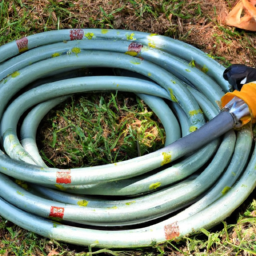Garden Hose How Many GPM
How Many Gallons Per Minute Is A Garden Hose
How Much Water Does a Garden Hose Offer?
It is crucial to understand the water flow rate available from a garden hose for efficient and effective garden maintenance and cleaning. In this article, we explore some of the key aspects that determine the water offered through the hose and investigate the gallons per minute (GPM) rate associated with a garden hose.
What Is the Average Gallon Per Minute for a Garden Hose?"
An average garden hose flows at a rate of about 5 to 10 gallons per minute (GPM). This rate varies depending on the diameter of the hose, the length of the hose, and the water pressure. The diameter of a regular garden hose ranges from 5/8-inch to 3/4-inch, with the larger diameter conveying the most amount of water.
The length of a garden hose is an important factor in determining how much water is delivered. The shorter the length of the hose, the greater the flow, while longer hoses reduce the flow rate. For instance, a 100-foot long hose with a 1/2-inch diameter and a pressure of 35 psi will produce a water flow rate of only 2.2 GPM. On the other hand, a 30-foot long hose with the same diameter and pressure will generate a water flow of 8.7 GPM.
Finally, the water pressure is one of the most important factors to consider when determining the GPM rate of the hose. The higher the pressure, the greater the water flow. A garden hose with a pressure of 30 psi provides a flow of 4.3 GPM, while the same hose with a pressure of 80 psi results in 6.7 GPM.
How Is GPM Calculated?
The general formula used to calculate the gallons per minute of water flow through a garden hose is as follows: GPM (60 x PSI x Cv)/ ( x TD2)
In this formula, PSI is the pounds per square inch (PSI) of the water pressure, Cv is the flow coefficient, TD is the internal diameter of the hose, and is the mathematical constant Pi. The Cv increases as the diameter of the hose increases, making it a better option for those wanting to maximize water flow rate.
Factors That Affect Gallon Per Minute of Water Flow
Hose Length
The length of the hose contributes directly to the water flow rate. Longer hoses decrease the flow rate, meaning that the flow rate will not exceed its maximum potential.
Hose Diameter
The diameter of the hose affects the water flow rate significantly. Generally, a larger diameter will result in higher water flow rate. The Cv increases with an increase in the diameter of the hose, resulting in higher water flow.
Water Pressure
Water pressure is another important factor in determining the GPM rate of the hose. The higher the pressure, the greater the water flow rate, and vice versa. Too low a pressure may result in a sluggish water flow, while too high a pressure may damage the hose.
Tips for Maximizing Water Flow
Choose High-Quality Hoses
In order to ensure maximum water flow, it is important to purchase a high-quality garden hose. The better the hose, the less likely it will clog and result in poor water flow.
Check for Kinks
It is essential to check the hose for kinks and twists before using. Kinks and twists can significantly reduce the water flow rate by blocking or limiting the water pressure.
Keep the Hose Unclogged
Be sure to check the hose regularly for debris and to rake away any sediment or leaves that may have accumulated in the hose. This can help ensure that the water is flowing properly.
Check the Connections
Any connections between the hose and the faucet should be checked and tightened regularly. Even minor leaks can reduce water flow rate significantly.
Insights
The water flow rate of a garden hose is determined by a variety of factors, including the length, diameter, and water pressure. An average garden hose flows at a rate of 5-10 gallons per minute, but this rate can be maximized by using quality hoses, checking for kinks and debris, and ensuring that all connections are well-fitted and secure. Understanding how much water is provided by a garden hose is important in order to achieve efficient results in garden and house maintenance.

Previous Page
Next Page